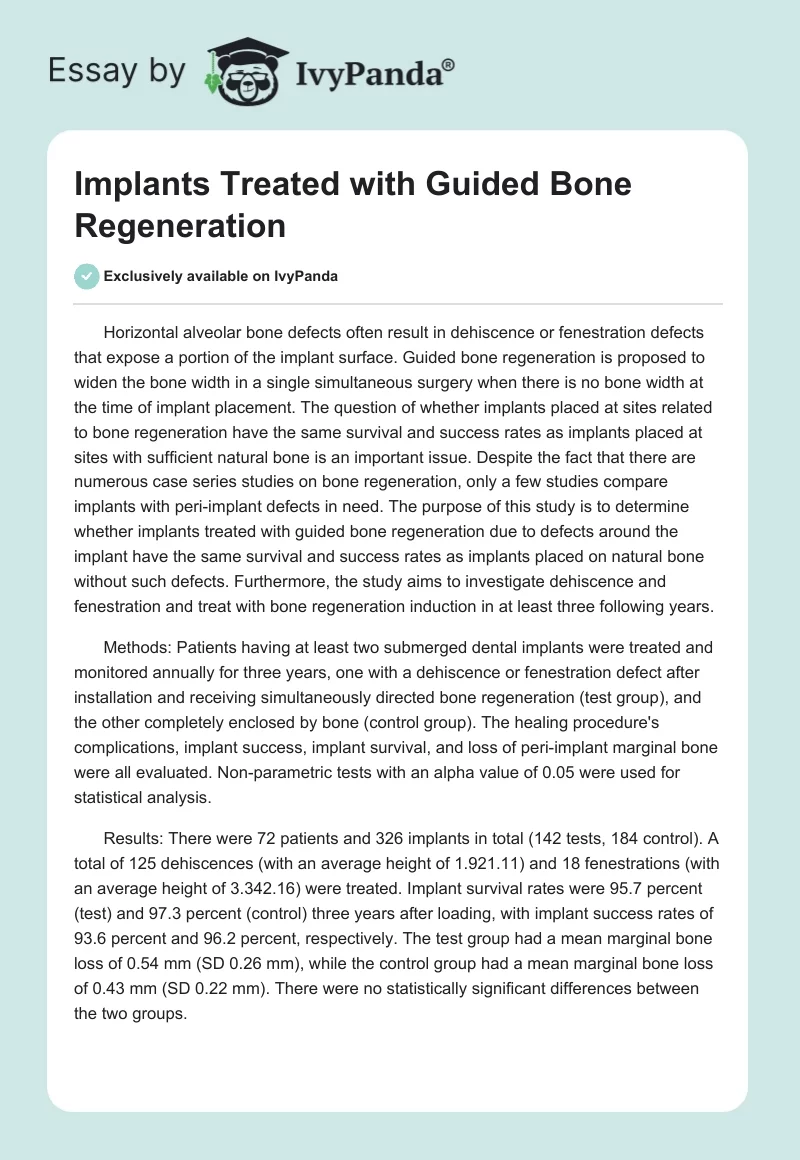Horizontal alveolar bone defects often result in dehiscence or fenestration defects that expose a portion of the implant surface. Guided bone regeneration is proposed to widen the bone width in a single simultaneous surgery when there is no bone width at the time of implant placement. The question of whether implants placed at sites related to bone regeneration have the same survival and success rates as implants placed at sites with sufficient natural bone is an important issue. Despite the fact that there are numerous case series studies on bone regeneration, only a few studies compare implants with peri-implant defects in need. The purpose of this study is to determine whether implants treated with guided bone regeneration due to defects around the implant have the same survival and success rates as implants placed on natural bone without such defects. Furthermore, the study aims to investigate dehiscence and fenestration and treat with bone regeneration induction in at least three following years.
Methods: Patients having at least two submerged dental implants were treated and monitored annually for three years, one with a dehiscence or fenestration defect after installation and receiving simultaneously directed bone regeneration (test group), and the other completely enclosed by bone (control group). The healing procedure’s complications, implant success, implant survival, and loss of peri-implant marginal bone were all evaluated. Non-parametric tests with an alpha value of 0.05 were used for statistical analysis.
Results: There were 72 patients and 326 implants in total (142 tests, 184 control). A total of 125 dehiscences (with an average height of 1.921.11) and 18 fenestrations (with an average height of 3.342.16) were treated. Implant survival rates were 95.7 percent (test) and 97.3 percent (control) three years after loading, with implant success rates of 93.6 percent and 96.2 percent, respectively. The test group had a mean marginal bone loss of 0.54 mm (SD 0.26 mm), while the control group had a mean marginal bone loss of 0.43 mm (SD 0.22 mm). There were no statistically significant differences between the two groups.

